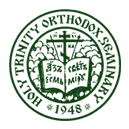This post was originally published on this site
At Holy Trinity Seminary, we realize the necessity of travel beyond a classroom. Therefore, in the summer of 2015,students of Byzantine History went to Istanbul in the summer of 2015, and this spring, they joined students of Liturgical Theology to explore Byzantine liturgical art in the Metropolitan Museum of Art of New York City.
To continue this “Byzantine Heritage Tour” with a new group of students,seven seminarians and three faculty drove down to New York City on the weekend of December 16-17, 2016 to visit the Synod of Bishops of the Russian Church Outside of Russia and the Metropolitan Museum of Art.
At the Synod, these pilgrims met with Bishop Nicholas of Manhattan, who welcomed them into his office, gave them a personal tour of the premises, and finally, invited them into his cell for a warm conversation. During the tour, Vladyka emphasized the need to understand and appreciate ROCOR history to experience continuity with the past. Not only does this help to frame the present and direct the church into the future, but it also keeps us in living communion with the more recent saints in heaven. From this perspective, Vladyka reiterated the need to keep Mr.Serge Semenenko in our memories and prayers, as he donated New York City building that houses the Synod.
During the tour, the students were taken to St. Sergius of Radonezh English-Language Mission and to the Cathedral of Our Lady of the Sign, both of which are housed in the Synod. The Cathedral is the only Orthodox church in the greater New York City metropolitan area that offers a complete daily cycle of services, including the liturgy. Although the original Kursk-Root Icon was not present, a copy was available for veneration, along with relics from various saints, a rare icon of the spiritual history of Russia, and the miraculous icon of Our Lady of All Who Sorrow from Harbin (in St. Sergius Chapel). Also on display was the mantle worn by Tsar Nicholas on the day of his coronation. In this context, Vladyka wanted the students to remember that the Synod is a unique place, not only because it is sanctified by myriads of prayers but because of its spiritual history: “this is the place where St. John of San Francisco stood; this is the place where St. Xenia and the New Martyrs were glorified.”
Finally, Vladyka gave the students very important advice for future priests. They must always be open to their parishioners, always have their doors open to welcome them, talk to them, and help them in any way possible. After all, the priest exists for the salvation of his people, and therefore, must be warm, loving, and inviting.
After an edifying time at the synod and a good nights’ rest at a hotel in Newark International Airport, the students and faculty were up at 7:30am, ready to eat breakfast and start their day-long excursion in the Metropolitan Museum of Art. They were blessed with a special tour of the Byzantine collection by Fr. Deacon Evan Freeman, an instructor of liturgical art at St Vladimir’s Seminary and doctoral student in Byzantine Art at Yale. He walked students through the exhibit, engaging them in the material history of the Orthodox Church in the middle and late Byzantine periods. This included liturgical items (chalices and censors), devotional items (made of ivory and encaustic), and even a khachkar, a monumental Armenian cross-stone. Through the guidance of Fr. Evan, the students received an art-historical perspective that supplemented the dogmatic, liturgical, and historical perspectives learned in classes and in church. One of the most amazing features of this tour was the visual reinforcement of the Orthodox Church’s true continuity with tradition for over 1,500 years!
After the tour, the group went to the international exhibit of “Jerusalem 1000-1400: Every People under Heaven,” and then, dispersed for half an hour of self-directed exploration. Thereafter, the group went to the Metropolitan’s “Cloisters” branch, amedieval Catholic compound reconstructed in Manhattan from the stones of various French abbeys. With Gregorian chant and a medieval morality play in the background, this experience provided an important space for students to consider “comparative religion.” Finally, the group passed through St. Vladimir Seminary on the way back home to Jordanville.
Thank God for a fun, informative, and edifying trip! Also, special thanks to two anonymous donors, the parishes of St. Nectarios in TN and St. Elizabeth in NJ, and Holy Trinity Seminary that made this trip possible.



